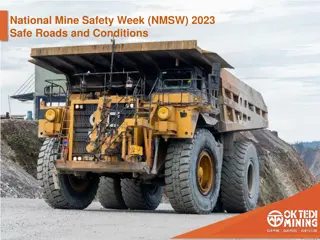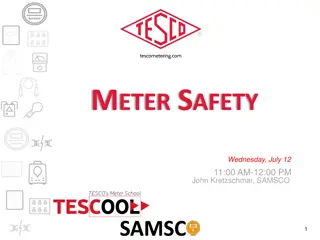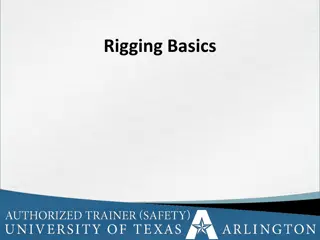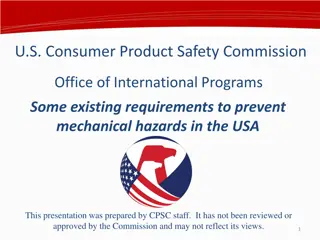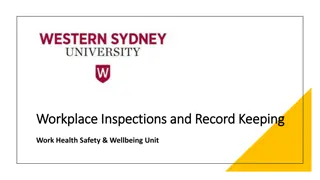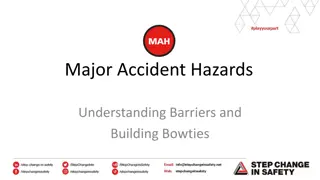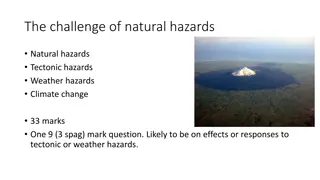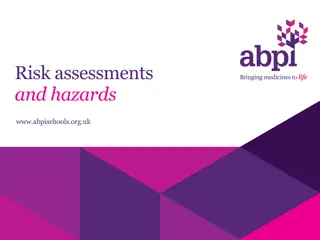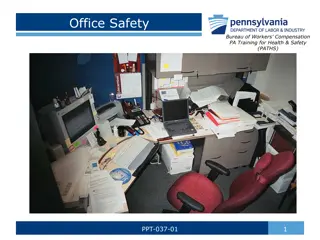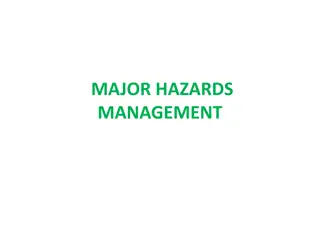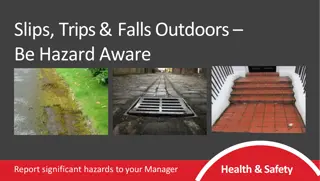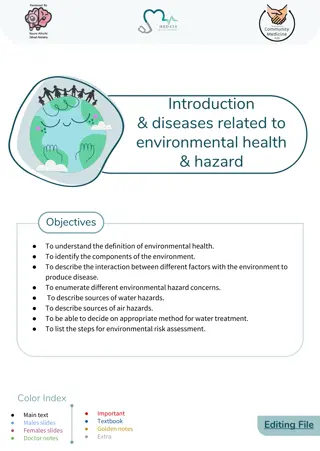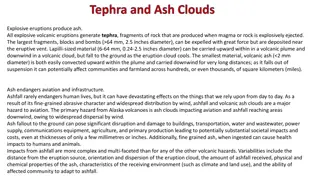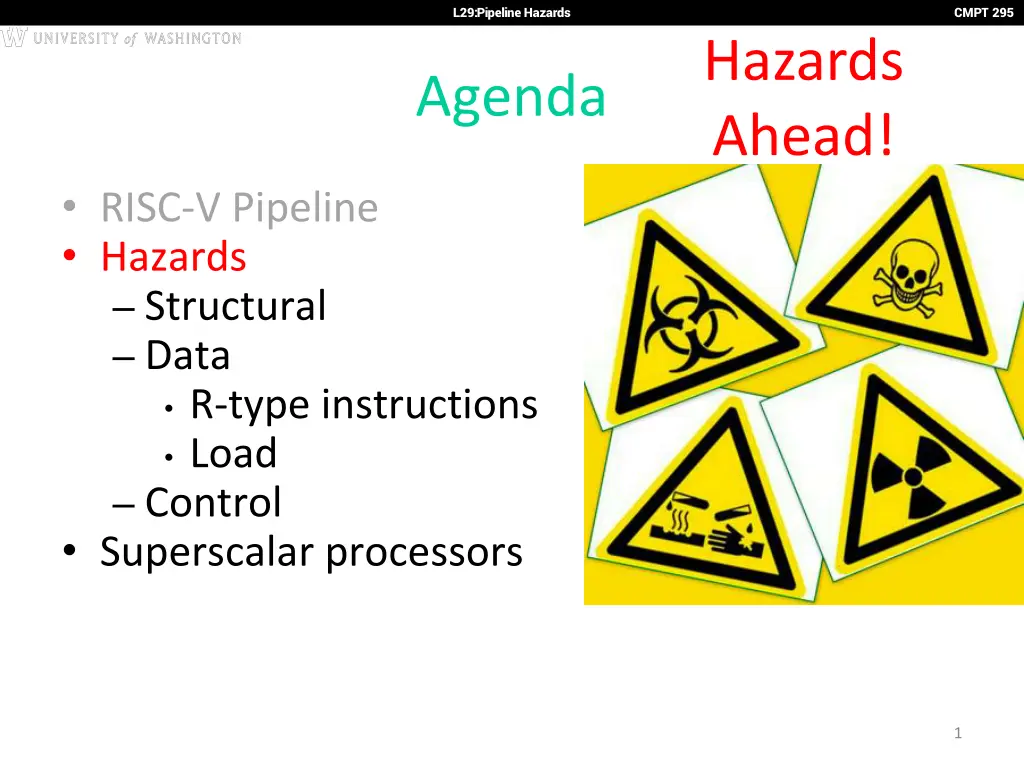
Understanding Pipeline Hazards in RISC-V Processors
Uncover the structural, data, and control hazards in RISC-V pipeline processors, exploring solutions to prevent delays and conflicts. Learn about regfile usage, memory access issues, and strategies to optimize instruction execution.
Download Presentation

Please find below an Image/Link to download the presentation.
The content on the website is provided AS IS for your information and personal use only. It may not be sold, licensed, or shared on other websites without obtaining consent from the author. If you encounter any issues during the download, it is possible that the publisher has removed the file from their server.
You are allowed to download the files provided on this website for personal or commercial use, subject to the condition that they are used lawfully. All files are the property of their respective owners.
The content on the website is provided AS IS for your information and personal use only. It may not be sold, licensed, or shared on other websites without obtaining consent from the author.
E N D
Presentation Transcript
L29:Pipeline Hazards CMPT 295 Hazards Ahead! Agenda RISC-V Pipeline Hazards Structural Data R-type instructions Load Control Superscalar processors 1
L29:Pipeline Hazards CMPT 295 Pipelining Hazards A hazard is a situation that prevents starting the next instruction in the next clock cycle 1) Structural hazard A required resource is busy (e.g. needed in multiple stages) 2) Data hazard Data dependency between instructions Need to wait for previous instruction to complete its data write 3) Control hazard Flow of execution depends on previous instruction 2
L29:Pipeline Hazards CMPT 295 Structural Hazard: Regfile! RegFile: Used in ID and WB! Time (clock cycles) I n s t r Load Add Store O r d e r Sub Or 3
L29:Pipeline Hazards CMPT 295 Regfile Structural Hazards Each instruction: can read up to two operands in decode stage can write one value in writeback stage Avoid structural hazard by having separate ports two independent read ports and one independent write port Three accesses per cycle can happen simultaneously RW RA RB Write Enable 5 5 5 portA portW 32 32 32 x 32-bit Registers portB Clk 32 4
L29:Pipeline Hazards CMPT 295 Regfile Structural Hazards Two alternate solutions: 1) Build RegFile with independent read and write ports (what you will do in the project; good for single-stage) 2) Double Pumping: split RegFile access in two! Prepare to write during 1st half, write on falling edge, read during 2nd half of each clock cycle Will save us a cycle later... Possible because RegFile access is VERY fast (takes less than half the time of ALU stage) Conclusion: Read and Write to registers during same clock cycle is okay 5
L29:Pipeline Hazards CMPT 295 Structural Hazard: Memory Access Instruction and data memory used simultaneously Use two separate memories add t0, t1, t2 or t3, t4, t5 instruction sequence slt t6, t0, t3 sw t0, 4(t3) lw t0, 8(t3) 6
L29:Pipeline Hazards CMPT 295 Structural Hazards Summary Conflict for use of a resource In RISC-V pipeline with a single memory unit Load/store requires data access Without separate memory units, instruction fetch would have to stall for that cycle All other operations in pipeline would have to wait Pipelined datapaths require separate instruction/data memory units Or separate instruction/data caches RISC ISAs (including RISC-V) designed to avoid structural hazards e.g. at most one memory access/instruction 7
L29:Pipeline Hazards CMPT 295 2. Data Hazards (1/2) Consider the following sequence of instructions: add s0, s1, s2 sub s4, s0, s3 and s5, s0, s6 or s7, s0, s8 xor s9, s0, s10 Read during ID Stored during WB 8
L29:Pipeline Hazards CMPT 295 2. Data Hazards (2/2) Identifying data hazards: - Where is data WRITTEN? - Where is data READ? - Does the WRITE happen AFTER the READ? Time (clock cycles) add s0, s1, s2 sub s4, s0, s3 and s5, s0, s6 or s7, s0, s8 xor s9, s0, s10 9
L29:Pipeline Hazards CMPT 295 Solution 1: Stalling Problem: Instruction depends on result from previous instruction add s0, s1, s2 sub s4, s0, s3 Bubble: effecsively NOP: affecsed pipeline ssages do nothing (add x0 x0 x0)
L29:Pipeline Hazards CMPT 295 Data Hazard Solution: Forwarding Forward result as soon as it is available, even though it s not stored in RegFile yet add s0, s1, s2 sub s4, s0, s3 and s5, s0, s6 or s7, s0, s8 xor s9, s0, s10 Forwarding: grab operand from pipeline stage, rather than register file 11
L29:Pipeline Hazards CMPT 295 In our 5-stage pipeline, how many subsequent instructions do we need to look at to detect data hazards for this add? Assume we have double-pumping. add s0, s1, s2 A) 1 instruction B) 2 instructions C) 3 instructions D) 4 instructions E) 5 instructions sub s4, s0, s3 and s5, s0, s6 or s7, s0, s8 xor s9, s0, s10 12
L29:Pipeline Hazards CMPT 295 Data Hazard: Loads (1/4) Recall: Dataflow backwards in time are hazards lw t0, 0(t1) sub t3, t0, t2 Can t solve all cases with forwarding Must stall instruction dependent on load (sub), then forward after the load is done (more hardware) 13
L29:Pipeline Hazards CMPT 295 Data Hazard: Loads (4/4) Slot after a load is called a load delay slot If that instruction uses the result of the load, then the hardware will stall for one cycle Equivalent to inserting an explicit nop in the slot except the latter uses more code space Performance loss Idea: Let the compiler/assembler put an unrelated instruction in that slot no stall! 14
L29:Pipeline Hazards CMPT 295 3. Control Hazards Branch (beq, bne,...) determines flow of control Fetching next instruction depends on branch outcome Pipeline can t always fetch correct instruction Result isn t known until end of execute Simple Solution: Stall or flush on every branch until we have the new PC value How long must we stall? 15
L29:Pipeline Hazards CMPT 295 How many instructions after beq are affected by the control hazard? beq A)1 B) 2 C) 3 D)4 E) 5 Instr 1 Instr 2 Instr 3 Instr 4 16
L29:Pipeline Hazards CMPT 295 Branch Stall How many bubbles required for branch? Time (clock cycles) beq Instr 1 Instr 2 Instr 3 Instr 4 17
L29:Pipeline Hazards CMPT 295 3. Control Hazard: Branching RISC-V Solution: Branch Prediction guess outcome of a branch, fix afterwards if necessary Must cancel (flush) all instructions in pipeline that depended on guess that was wrong How many instructions do we end up flushing? 18
L29:Pipeline Hazards CMPT 295 Kill Instructions after Branch if Taken Taken branch beq t0, t1, label Convert to NOP sub t2, s0, t5 Convert to NOP or t6, s0, t3 PC updated reflecting branch outcome label: xxxxxx Two instructions are affected by an incorrect branch, just like we d have to insert two NOP s/stalls in the pipeline to wait on the correct value! 19
L29:Pipeline Hazards CMPT 295 Branch Prediction Taken branch beq t0, t1, label Guess next PC! label: .. .. Check guess correct In the correct case, we don t have any stalls/NOP s at all! Prediction, if done correctly, is better on average than stalling 20


